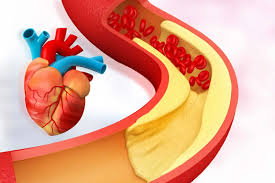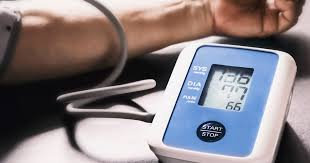Diabetes and heart disease stand as two of the most widespread health problems impacting millions around the globe. People often talk about them on their own. Yet, a complex and dangerous bond ties them together, forming what many call a vicious cycle. Getting a clear picture of this close link is vital for effectively addressing and managing both conditions.
This article will explore the numerous ways diabetes significantly increases the risk of heart trouble. We will look at how the body works, common risk factors, and how these affect your heart. We will also demonstrate the importance of taking charge and making changes in your daily life to break this harmful cycle.
Understanding Diabetes and Its Impact on the Cardiovascular System
This part helps you get a basic idea of diabetes. It shows how the condition directly harms your heart and blood vessels.
What is Diabetes?
Diabetes is a health problem where your body either does not make enough insulin, or cannot use the insulin it makes very well. Insulin is a hormone that helps sugar get into your cells to be used for energy. With Type 1 diabetes, the body makes little or no insulin. In Type 2 diabetes, which is more common, the body does not use insulin correctly.
When insulin fails, too much sugar stays in your blood. This high blood sugar, known as hyperglycemia, can slowly harm many parts of your body. It stresses organs and tissues, leading to significant health problems over time. This includes damage to your nerves, kidneys, and especially your blood vessels.
How Diabetes Damages Blood Vessels
High blood sugar takes a toll on the inner lining of your blood vessels. This lining, called the endothelium, becomes damaged and does not function properly. When this happens, your blood vessels lose their stretchiness, becoming stiff. They are also more likely to collect fatty plaque.
Diabetes also fuels ongoing inflammation throughout your entire body. This constant low-level fire hurts cells and tissues, making it easier for plaque to build up in your arteries. This added inflammation makes the problem worse. It speeds up the process that hardens your arteries.
Furthermore, diabetes increases something called oxidative stress. This happens when there are too many unstable molecules, called free radicals, in your body. These free radicals damage cells, including those critical for your heart and blood vessels. This cellular damage only adds to the harm already being done by high sugar.
The Direct Pathways: Diabetes as a Catalyst for Heart Disease
This section explains the exact ways diabetes directly leads to different kinds of heart problems.
Atherosclerosis: The “Hardening of the Arteries”
High blood sugar from diabetes actively helps fatty deposits, called plaque, pile up in your arteries. This process can begin years before you even know you have diabetes. The sticky sugar molecules join with fats and proteins, making them more likely to cling to vessel walls. This sticky buildup becomes a serious issue over time.
As this plaque grows, it starts to narrow your arteries. This makes it harder for blood to flow freely to your heart and other vital organs. Less blood means less oxygen and nutrients for those parts of your body. Think of it like a clogged pipe slowing down water.
Diabetes also makes your blood stickier and more prone to clotting. This is a considerable risk, because these clots can break off. If a clot blocks a narrowed artery in your heart, it causes a heart attack. If it blocks one in your brain, you have a stroke.
Hypertension: The Silent Killer Amplified by Diabetes
Diabetes can mess up your body’s system for keeping blood pressure steady. High blood sugar hurts the blood vessels that supply the kidneys. This can cause your body to retain more salt and water, thereby increasing your blood volume. More volume means higher pressure pushing against your artery walls.
Damage to your kidneys from diabetes also plays a role in high blood pressure. Kidneys that are not working right struggle to filter waste and control fluids. This puts extra strain on your cardiovascular system. Over time, this kidney stress makes blood pressure rise.
When you have both high blood pressure and diabetes, the danger to your heart goes way up. They work together, making each other worse. This combination causes much faster wear and tear on your arteries. It makes serious heart problems far more likely than having just one condition alone.
Dyslipidemia: Unfavorable Cholesterol Profiles in Diabetics
People with diabetes often have unhealthy cholesterol levels. They might have high levels of triglycerides, a type of fat in the blood. Also, their “good” cholesterol, HDL, tends to be too low. Sometimes, their “bad” cholesterol, LDL, is also higher than it should be.
These unhealthy fat levels significantly speed up atherosclerosis, the hardening of the arteries. High triglycerides and low HDL make it easier for plaque to form and build up. This creates a dangerous environment inside your blood vessels. It reduces your arteries’ ability to deliver blood.
Even when LDL cholesterol levels seem normal in someone with diabetes, the LDL particles can be smaller and denser. These tiny, dense particles are more harmful. They can slip into artery walls more easily, leading to faster plaque growth. This worsens your arterial health.
The Vicious Cycle: When Heart Disease Worsens Diabetes
This part looks at how having heart disease can, in turn, make your diabetes harder to manage and harm your health even more.
Reduced Blood Flow to Pancreas
If you have atherosclerosis, it can narrow the arteries that send blood to your pancreas. The pancreas is the organ that makes insulin. When blood flow to it lessens, the pancreas does not get enough oxygen and nutrients. This can hurt its ability to make insulin.
A struggling pancreas means it might not make enough insulin, or the insulin it does make may not work as well. This directly leads to poorer control of your blood sugar. With less effective insulin, sugar stays high in your blood. This makes diabetes more challenging to manage each day.
Poor blood flow to the pancreas creates a challenging loop. The high sugar from insufficient insulin production can then cause more artery damage. This further harms the pancreas, making the original problem worse. It is a true downward spiral for your glucose levels.
Increased Inflammation and Insulin Resistance
Heart disease itself is a condition marked by ongoing inflammation in your body. When your heart is under stress or damage, it triggers the body’s natural defense systems. These systems release inflammatory chemicals. This constant inflammation can spread throughout your body.
This chronic inflammation from heart disease can make insulin resistance even worse. Insulin resistance means your body’s cells do not respond well to insulin. They struggle to take in sugar from your blood. When inflammation is high, cells become even more resistant.
This makes your diabetes much more challenging to control. Your body has to make more and more insulin to try to bring blood sugar down. This extra demand can wear out the pancreas faster. It creates a more brutal fight to keep blood sugar within healthy limits.
Lifestyle and Psychological Factors
Having heart problems can limit how much you can move your body. Once easy activities might become hard or even unsafe. This reduced physical activity makes it much harder to manage your weight. It also makes controlling your blood sugar levels more of a challenge.
Dealing with a heart disease diagnosis can bring on a lot of stress, worry, and sadness. These feelings often make it harder to stick to a good diabetes self-care plan. When you are feeling low, you might skip checking your blood sugar or eating healthy meals. This emotional toll can seriously affect your health outcomes.
The worry of another heart event or needing more treatment can be immense. This mental burden can lead to less motivation for exercise. It can also cause changes in eating habits, often for the worse. All these factors make the already challenging job of managing diabetes even harder.
Recognizing the Symptoms and Risk Factors
This part will provide readers with the information they need to identify potential issues and assess their risks.
Common Symptoms to Watch For
If you have diabetes, you might notice you are very thirsty, pee a lot, or feel hungrier than usual. You might also have blurry vision or feel very tired. Wounds may heal slowly too. It is important to know these signs so you can get help fast.
For heart disease, common signs include chest pain or discomfort, feeling short of breath, or pain in your arm, back, neck, or jaw. You might also feel lightheaded or very tired without reason. In people with diabetes, heart disease symptoms can sometimes be very mild or even silent. You might not feel the classic chest pain.
This is because diabetes can damage nerves, including those that send pain signals from your heart. So, a person with diabetes might have a silent heart attack, meaning they do not feel the usual pain. This makes it crucial to be aware of even small changes in your body. Do not wait to tell your doctor about new feelings or worries.
Key Risk Factors for Both Conditions
Many things can raise your chance of getting both diabetes and heart disease. Being overweight or obese is a big one. Not moving your body enough, known as a sedentary lifestyle, also adds to the risk. Eating a diet high in processed foods, sugar, and unhealthy fats can also be detrimental. Your family history and genes also play a part.
For those with diabetes, there are extra things that increase heart risk. Having diabetes for many years puts more strain on your heart system. Poorly controlled blood sugar levels over time directly damage your blood vessels. High blood pressure and unhealthy cholesterol levels are also more common in people with diabetes. These factors build up, making heart problems more likely for someone living with diabetes.
Breaking the Cycle: Prevention and Management Strategies
This section will focus on real steps you can take to lower your risk and manage both conditions well.
Lifestyle Modifications: The Cornerstones of Prevention
Eating well is a powerful tool against both diabetes and heart disease. Focus on a heart-healthy and diabetes-friendly eating plan, like the Mediterranean diet. Choose whole grains, lots of fruits and veggies, lean proteins, and healthy fats. Limit sugary drinks, processed foods, and unhealthy fats to keep your blood sugar and heart happy.
Getting regular physical activity is a must. Aim for at least 30 minutes of moderate exercise most days of the week. This helps control your blood sugar, manage your weight, and strengthen your heart. Even simple walks make a big difference in your overall health. Moving your body helps every system.
Reaching and staying at a healthy weight can hugely cut your risk for both conditions. Even losing a small amount of weight can improve your blood sugar control and lower your blood pressure. Work with your doctor to find a weight goal that is right for you. Small changes can bring big rewards.
If you smoke, quitting is one of the best things you can do for your health. Smoking severely harms your blood vessels and makes diabetes much more challenging to control. It also directly increases your risk of heart attack and stroke. Get help to stop smoking today.
Medical Management and Monitoring
Keeping your blood glucose levels in check is vital. Your doctor will likely set A1C targets for you, which measure your average blood sugar over two to three months. Regular blood sugar checks at home help you see how food and activity affect your levels. This enables you to make wise choices.
Managing your blood pressure and cholesterol is also key. Your doctor might prescribe medicines to help keep these numbers in a healthy range. But remember, lifestyle changes like eating well and staying active are just as significant. They work together to protect your heart.
Regular check-ups with your doctor are essential. They can monitor your blood sugar, blood pressure, and cholesterol levels. Your doctor might also recommend special heart screenings, like an EKG or stress test, if you have diabetes. These routine visits help catch any issues early.
Expert Insights and Real-World Impact
“The connection between diabetes and heart disease is unbreakable,” says Dr. Elena Rodriguez, a leading heart specialist. “We must treat them as one challenge, not two. Patients need a full plan that looks at both conditions together for the best results.”
Consider Maria, a 58-year-old who had Type 2 diabetes and recently learned she had high blood pressure. She felt scared but decided to make a change. Working with her doctor, she started walking 30 minutes daily and swapped sugary snacks for fruits. Within six months, her blood sugar levels improved, and her blood pressure decreased without the need for additional medication. She proved that small steps add up to big wins.
Conclusion: Taking Control of Your Cardiovascular Health
The link between diabetes and heart disease is clear. It forms a dangerous cycle that can make each condition worse. However, by understanding how they work together and taking strong, active steps, you can significantly lower your risk. You can also truly improve your daily life.
Here are the key things to remember:
- High blood glucose directly harms your blood vessels. This raises your risk of hardened arteries, high blood pressure, and high bad cholesterol levels.
- Existing heart disease can make diabetes harder to control. It does this by cutting blood flow to your pancreas and increasing inflammation in your body.
- Simple lifestyle changes are significant for stopping and managing these conditions. This includes eating healthy, moving your body often, keeping a healthy weight, and stopping smoking.
- Close medical checks and sticking to your doctor’s treatment plans are vital if you have diabetes.
Discover more from Healthinfo24.com
Subscribe to get the latest posts sent to your email.




Nia80
https://shorturl.fm/3X8uZ